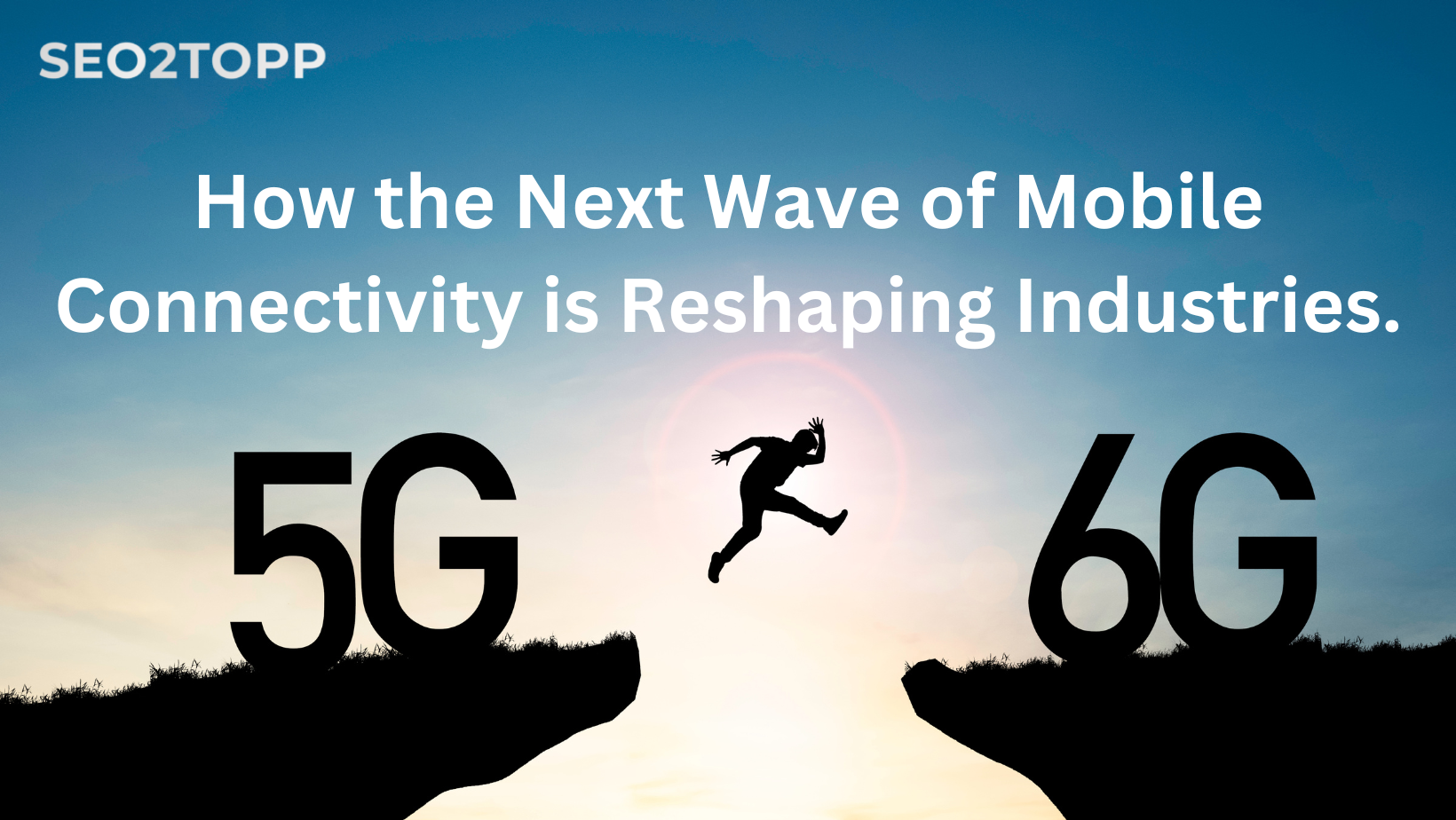The world is on the brink of a technological revolution, driven by the advent of 5G and the impending arrival of 6G networks. The Future of 5G and 6G Networks solutions are poised to transform industries across the globe, ushering in a new era of unprecedented speed, reliability, and innovation. In this comprehensive article, we delve into the intricacies of these next-generation networks, exploring their impact on various sectors and the emerging industries that are set to thrive in this new paradigm.
Key Takeaways
- 5G and 6G networks offer unparalleled data transfer rates, low latency, and massive connectivity, enabling a plethora of new applications and services.
- Industries such as healthcare, manufacturing, transportation, and entertainment are poised to undergo significant transformations, paving the way for groundbreaking advancements.
- The top three emerging industries set to flourish with the advent of 5G and 6G include smart cities, autonomous vehicles, and immersive experiences.
Introduction to the future of mobile connectivity
As we stand on the precipice of a new era in mobile connectivity, the world is abuzz with excitement and anticipation. The advent of 5G networks has already begun to reshape industries, offering unprecedented data transfer rates, ultra-low latency, and massive connectivity capabilities. However, this is merely the beginning, as the next wave of mobile connectivity, heralded by the impending arrival of 6G technology, promises to push the boundaries of what we thought possible.
The Future of 5G and 6G Networks
To fully comprehend the impact of the next wave of mobile connectivity, it is essential to grasp the fundamental differences between 5G and 6G networks.
5G Networks
5G networks represent a significant leap forward in mobile connectivity, offering unprecedented data transfer rates, ultra-low latency, and massive connectivity capabilities. With theoretical peak speeds of up to 20 Gbps and latency as low as 1 millisecond, 5G enables a multitude of new applications and services that were previously unimaginable.
Some key features of 5G networks include:
- Enhanced Mobile Broadband (eMBB): Providing high-speed internet access for mobile devices, enabling seamless streaming, online gaming, and other bandwidth-intensive applications.
- Ultra-Reliable Low-Latency Communications (URLLC): Ensuring ultra-low latency and high reliability, critical for applications such as remote surgery, autonomous vehicles, and industrial automation.
- Massive Machine-Type Communications (mMTC): Enabling massive connectivity for Internet of Things (IoT) devices, facilitating smart cities, intelligent transportation systems, and more.
6G Networks
While 5G is still in its early stages of deployment, researchers and industry leaders are already setting their sights on the next frontier: 6G networks. This cutting-edge technology promises to revolutionize connectivity, offering even faster data transfer rates, lower latency, and enhanced capabilities.
Some of the anticipated features of 6G networks include:
- Terahertz Frequencies: Operating in the terahertz frequency range, 6G networks are expected to achieve data rates exceeding 1 Tbps, enabling ultra-high-definition video streaming, holographic communication, and more.
- Intelligent Surfaces: Utilizing reconfigurable intelligent surfaces, 6G networks can dynamically adapt to the environment, optimizing signal propagation and improving coverage.
- Ubiquitous Connectivity: Seamless connectivity across various platforms, devices, and environments, enabling a truly interconnected world.
The impact of 5G and 6G on industries
The advent of 5G and the impending arrival of 6G networks are poised to have a profound impact on various industries, ushering in a new era of innovation and disruption. Let’s explore how these cutting-edge technologies are reshaping different sectors:
Healthcare: With ultra-low latency and high reliability, 5G and 6G networks enable remote surgery, real-time monitoring of patients, and the transmission of high-resolution medical images, revolutionizing telemedicine and improving patient outcomes.
Manufacturing: These advanced networks facilitate the implementation of smart factories, enabling real-time monitoring, predictive maintenance, and seamless collaboration between machines, robots, and human operators, enhancing efficiency and productivity.
Transportation: Autonomous vehicles and intelligent transportation systems rely heavily on low-latency communication and massive connectivity, which 5G and 6G networks can provide, ensuring safer and more efficient transportation solutions.
Entertainment: With ultra-high data transfer rates, 5G and 6G networks pave the way for immersive experiences, such as virtual reality (VR), augmented reality (AR), and ultra-high-definition video streaming, transforming the entertainment industry.
Smart Cities: The massive connectivity capabilities of these networks enable the seamless integration of various IoT devices, sensors, and systems, facilitating the development of smart cities with optimized traffic management, efficient resource utilization, and enhanced public safety.
Top 3 emerging industries changing with the next wave of mobile connectivity
1. Smart Cities
The concept of smart cities has been gaining traction in recent years, and the advent of 5G and 6G networks is set to accelerate its realization. These advanced networks enable the seamless integration of various IoT devices, sensors, and systems, facilitating the development of intelligent urban environments that optimize resource utilization, enhance public safety, and improve the overall quality of life for residents.
With 5G and 6G networks, smart cities can leverage real-time data analytics, predictive maintenance, and intelligent traffic management systems, leading to more efficient transportation, reduced energy consumption, and improved sustainability. A
2. Autonomous Vehicles
The automotive industry is on the cusp of a revolution, with autonomous vehicles poised to reshape the way we perceive transportation. However, the successful implementation of self-driving cars relies heavily on low-latency communication and massive connectivity, which 5G and 6G networks can provide.
These advanced networks enable real-time data exchange between vehicles, infrastructure, and other connected devices, ensuring safer and more efficient navigation. With ultra-low latency, autonomous vehicles can react instantaneously to changing road conditions, pedestrians, and other obstacles, minimizing the risk of accidents.
3. Immersive Experiences
The entertainment industry is set to undergo a profound transformation with the advent of 5G and 6G networks. These cutting-edge technologies enable the delivery of immersive experiences, such as virtual reality (VR), augmented reality (AR), and ultra-high-definition video streaming, revolutionizing the way we consume and interact with media.
With ultra-high data transfer rates and low latency, 5G and 6G networks can support the seamless transmission of high-resolution, real-time content, enabling users to fully immerse themselves in virtual environments or augmented experiences. This opens up new possibilities for gaming, education, tourism, and even remote collaboration, blurring the boundaries between the digital and physical worlds.
The future of connectivity with 5.5G
While the world eagerly anticipates the arrival of 6G networks, a transitional step known as 5.5G is set to bridge the gap and provide enhanced capabilities, laying the foundation for the next wave of mobile connectivity.
What is 5.5G?
5.5G is an evolutionary upgrade to the existing 5G infrastructure, designed to address the growing demand for higher data rates, lower latency, and increased reliability. This interim technology aims to enhance the capabilities of 5G networks, while also paving the way for the eventual transition to 6G.
Some key features of 5.5G include:
- Higher Frequencies: Utilizing higher frequency bands, such as the millimeter-wave and terahertz ranges, 5.5G networks can achieve data rates exceeding 100 Gbps, enabling advanced applications like holographic communication and ultra-high-definition video streaming.
- Improved Beamforming: Advanced beamforming techniques in 5.5G networks optimize signal propagation, improving coverage and reducing interference, resulting in more reliable and efficient connectivity.
- Integrated Access and Backhaul (IAB): By integrating access and backhaul functionalities, 5.5G networks can simplify network architecture, reducing deployment costs and improving scalability.
Challenges and opportunities of the future of mobile connectivity
Challenges
Infrastructure Development: The deployment of 5G and 6G networks requires significant infrastructure investments, including the installation of new base stations, antennas, and fiber optic networks, posing logistical and financial challenges for service providers and governments.
Spectrum Allocation: As new frequency bands are utilized for 5G and 6G networks, effective spectrum management and allocation become critical to ensure efficient utilization and avoid interference with existing wireless services.
Energy Consumption: Advanced mobile networks, with their increased data rates and massive connectivity, are expected to consume more energy, raising concerns about sustainability and environmental impact.
Security and Privacy: With the proliferation of connected devices and the vast amounts of data generated, ensuring robust security measures and maintaining user privacy become paramount challenges in the era of 5G and 6G networks.
Skill Development: The successful implementation and maintenance of these advanced networks require a skilled workforce with specialized knowledge and expertise, necessitating investments in education and training programs.
Opportunities
Economic Growth and Job Creation: The deployment of 5G and 6G networks presents significant economic opportunities, driving innovation, fostering new business models, and creating job opportunities across various industries.
Smart City Development: Advanced mobile connectivity enables the realization of smart city initiatives, leading to more efficient resource management, improved public services, and enhanced quality of life for urban residents.
Industrial Automation and Digitalization: 5G and 6G networks facilitate the digitalization of industries, enabling smart factories, predictive maintenance, and real-time monitoring, improving efficiency, productivity, and competitiveness.
Healthcare Advancements: With ultra-low latency and high reliability, these advanced networks enable telemedicine, remote patient monitoring, and even remote surgery, improving healthcare accessibility and outcomes.
Sustainable Solutions: The integration of IoT devices and intelligent systems facilitated by 5G and 6G networks can contribute to sustainable solutions, optimizing resource utilization, reducing waste, and promoting environmental conservation.
Conclusion
As we stand on the precipice of a new era in mobile connectivity, the world is poised to witness unprecedented transformations across various industries. The advent of 5G networks and the impending arrival of 6G technology are not mere technological advancements; they represent a paradigm shift that will reshape the way we live, work, and interact with the world around us.
For more such content do follow Seo2topp. We also offer affordable and best digital marketing solutions for new startups, e-commerce sellers and small businesses. Contact us, if you are looking for end-to-end solutions for channeling your business to the success pathway.










Leave a Reply